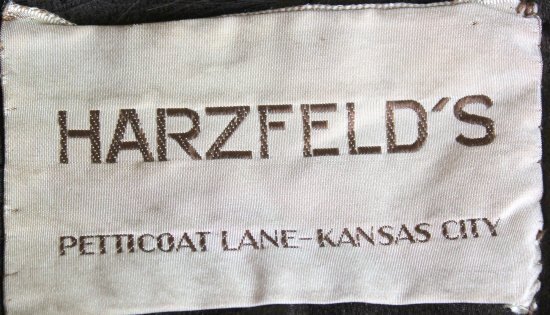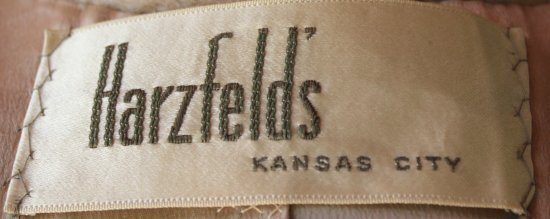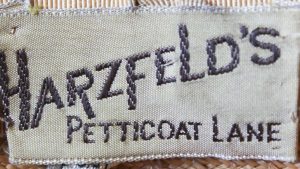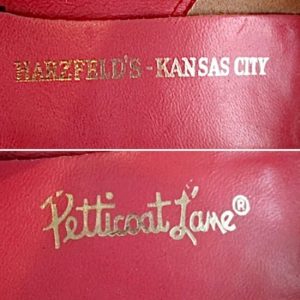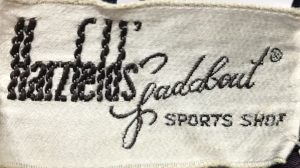Harzfeld’s was a Kansas City area department store that specialized in women’s and children’s clothing. Initially called the Parisian Cloak Company, it opened in 1891 under the management of Siegmund Harzfeld with financing provided by Ferdinand Siegel. The shop offered ready-to-wear clothing at a time when women’s ready-made garment manufacturing was still in its infancy.
By 1913 the concept was successful enough to allow the company to relocate from its first downtown location to a larger, newly constructed, modern building on Petticoat Lane. During this decade the store went through a series of name changes. The Parisian Cloak Company became Harzfeld’s Parisian Cloak Company, then Harzfeld’s Parisian, and finally, by late 1919, it was simply called Harzfeld’s.
In 1923 a second Harzfeld’s opened in Lawrence, Kansas and six years later it was followed by a third location in Columbia, Missouri. The Lawrence store closed in the 1950s but the company continued to flourish. By the end of the 1960s four more locations had sprung up in the Kansas City metropolitan area.
Despite being a local chain, Harzfeld’s advertised nationally in high fashion publications such as Vogue and Harper’s Bazaar. The stores were known for carrying designer ready-to-wear labels including Adrian, Irene, Norman Norell, Christian Dior, and Halston, but they also offered more affordable brands like the Kansas City-based Nelly Don.
In the late 1920s Harzfeld’s began to market products under its own in-house labels. The first, Gadabout (sometimes called Gadabouts), was a line of sportswear and accessories. This name was first used in 1928, it was trademarked in 1941, and it was produced until at least 1977. A sub-label of Gadabout, Harzfeld’s Gadabout Jr., was trademarked in 1959.
The name Petticoat Lane was introduced and trademarked in 1931. This label was used for various types of items including clothing, hosiery, handbags, footwear, facial products, and perfume. The Town and Country label was available as early as 1935 and was produced through at least the mid-1960s. Lesterfield, a label applied to outerwear and separates, appeared in 1939 and was also used through at least the mid-1960s. K-50 was a label used for women’s and girl’s clothing and shoes. It was trademarked in 1942 and it was used through at least 1976. A children’s footwear line, Harzfeld’s Proper-stride, was launched in 1949 and it was trademarked in 1971.
In 1972 Harzfeld’s was acquired by Garfinkel, Brooks Brothers, Miller and Rhoads Inc. Two years later the store expanded into Oklahoma with locations in Tulsa and Oklahoma City. In 1981 Allied Stores Corp. took over the Harzfeld’s chain. Sales declined throughout the early 1980s and by the end of 1984 all Harzfeld’s locations had closed.
Written by Jennifer Binns of Hollie Point Vintage
